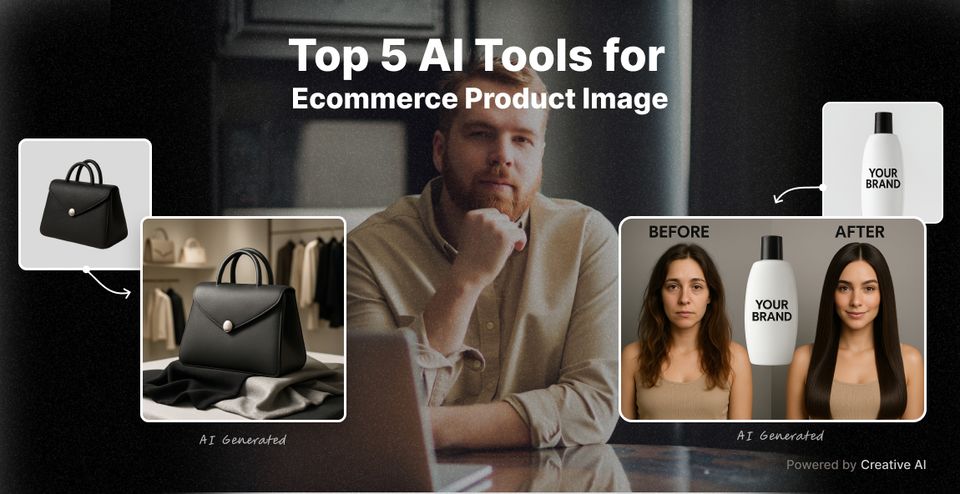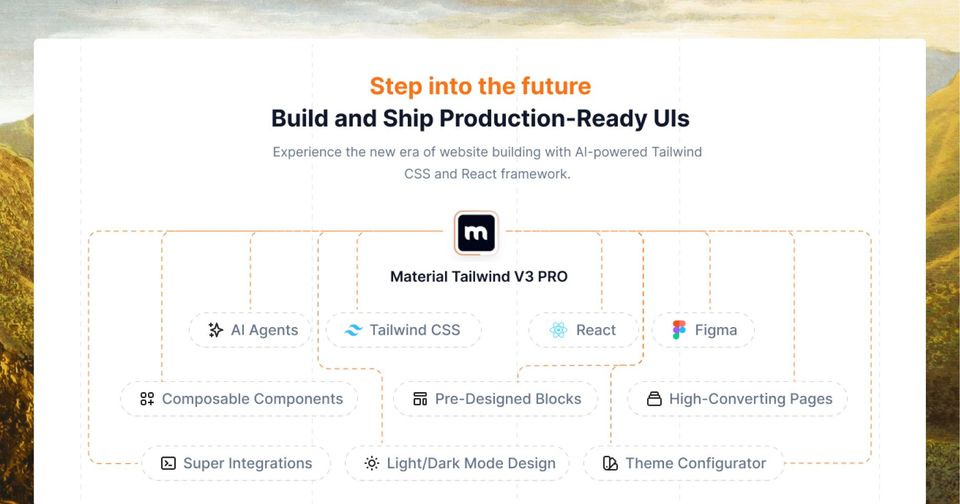Interested in becoming a backend developer? You’ve come to the right place. If you’ve got some coding experience but are new to programming, this guide will teach you all about backend development. It can be overwhelming to learn everything at once, which is why we break it down into steps. This way, you can learn at your own pace and get help when you need it!
As a new developer, it’s essential to know the basics before moving to more advanced topics. This roadmap will provide an overview of what you need to know as a beginner getting started with backend development.
Table Of Content
1. What is backend development?
2. Why learn backend development?
3. How to get started with backend development
4. The roadmap for beginners
4.1 Basics - Learn a Language and Database
4.2 Intermediate - Learn a backend Framework
4.3 Advanced - Api, Caching, Security, and Testing
5. Extra Stuff - Good to know
6. Next Steps
7. Conclusion
🎁 Bonus - 100 Free Backend Resources List
1. What is backend development?
Backend developers handle the code on the “back-end” of websites. This means that the server communicates with the database to store and retrieve information. To create a website, most of your code will be written in HTML, CSS, and JavaScript. Most people don’t know that this code is what makes your website responsive or interactive. In addition, developers use backend code to program actions on the server.
For example, if you want to send an email when someone registers for your company’s newsletter, backend developers will write the code to accomplish this task. They may use PHP or Python to write the code for your website.
Another way backend developers can help you is by optimizing the performance of your website. They can also maintain your database, write scripts in languages like Bash, and work with data. If you want to become a backend developer, these are just some of the skills you’ll need to know.
2. Why learn backend development?
If you want to be a developer, it’s a good idea to have various skills under your belt. For example, some developers only work on the frontend, some only do the backend, and a few do a bit of both.
Backend development is an important part of programming because it’s the server-side of the process. Therefore, you need to know how to write code to handle the frontend requests and communicate with databases to store data.
In many cases, backend developers need to understand how clients talk to servers and vice-versa, as well as how information is stored and retrieved from databases. Plus, you still need to know the basics of programming languages.
So if you’re interested in backend development, you’ll need a solid understanding of HTML and CSS before moving on. This will ensure that you have a good foundation in front end development as well. You don’t want to spend all your time learning back-end development when your knowledge is limited.
3. How to get started with backend development
It can be overwhelming to learn everything at once, which is why we break it down into steps. This way, you can learn at your own pace and get help when you need it! So if you’ve never coded before, don’t worry! We’ve got you covered with the basics.
Here are some key areas you need to know before you start working with backend development:
Internet
a. How does the Internet work?
b. What is HTTP?
c. How do browsers work?
d. What is a domain and how does it work?
e. What is hosting?
f. DNS and how it works?
Frontend Basics
a. HTML Knowledge
b. Basics CSS/SCSS Knowledge
c. Basics Javascript Knowledge
d. CSS frameworks and JS frameworks basics
OS and General Knowledge
a. Terminal Usage
b. Memory Management
c. Process Management
d. Thread and Concurrency
e. Basic Terminal Commands
f. Version Control System (Git)
4. The Backend Developer Roadmap for beginners
As a beginner, you’ll need to make sure you understand the fundamentals before moving on to more advanced topics. For example, it’s essential to know how to code before you learn how to make a REST API call.
It’s also important to understand how an application is structured. The frontend deals with the UI, while the backend deals with the logic. The frontend is what users interact with, while the backend is what creates the code behind it.
Extra Resource: The Front-end Developer Roadmap - How to Become One
This may sound confusing, but it’s actually pretty straightforward. Think of it this way: the frontend is the person wearing the suit, while the backend is the person who makes all of the clothes. The frontend makes sure everything looks good on the outside, while the backend is making sure everything looks good on the inside.
The roadmaps for each section are designed to help you understand what you should be focusing on.
4.1 Basics - Learn a Language and Database
A backend developer must learn a programming language to improve their coding skills. We start with the basics of a programming language: syntax, variables, data types, functions, objects, and execution. Besides these things, make sure to learn its quirks (Core details about its runtime e.g. concurrency, memory model).
Among the most used programming languages for the backend part of an application are:
a. Javascript
b. PHP
c. Python
d. Ruby
d. C#
A database is an organized collection of structured information, or data, typically stored electronically in a computer system. There are two major categories of database: SQL and NoSQL. SQL databases are table-based, while NoSQL databases are document, key-value, graph, or wide-column stores.
SQL Databases:
a. PostgreSQL
b. MySQL
c. Oracle
NoSQL Databases
a. Firebase
b. MongoDB
c. Cassandra
d. InfluxDB
4.2 Intermediate - Learn a backend Framework
To be able to develop backend applications faster, frameworks have been developed over each programming language.
a. Node.js is a runtime environment that allows software developers to launch both the frontend and backend of web apps using JavaScript.
b. Laravel is considered as one of the best PHP frameworks for web application development. It helps build wonderful apps using an expressive but simple syntax.
c. Django is a collection of Python libs allowing you to quickly and efficiently create a quality Web application and is suitable for both frontend and backend.
d. Rails or Ruby on Rails, is an open-source framework based on the Ruby programming language. Using RoR, developers don’t have to rewrite every single piece of code in the process of web application development.
e. ASP.NET is a web application framework developed and marketed by Microsoft to allow programmers to build dynamic websites. It allows you to use a full-featured programming language such as C# to build web applications easily.
Node.js vs Golang - Which Is Better for Backend Development
4.3 Advanced - Api, Caching, Security, and Testing
API is the acronym for Application Programming Interface, which is a software intermediary that allows two applications to talk to each other. Backend developers use APIs to create connections between different applications or services to improve user experience through the frontend. Some of the APIs you should know about are:
- REST
- JSON
- SOAP
- GSON
- XML-RPC
- AES
A cache is a high-speed data storage tier that stores a subset of data, usually transient in nature so that future requests for that data can be served faster than is possible by accessing the primary location of the data. Caching allows you to reuse previously retrieved or computed data efficiently. There are three types of caching:
- CDN
- Server Side
- Client Side
Web Secutiry Knowledge
- HTTPS
- SSL
- CORS
- Hashing Algorithms
Backend Testing is a testing method that checks the server-side or database of web applications or the software. Some of the testings you should know about are:
- Integration Testing
- Unit Testing
- Functional Testing
5. Extra stuff - Good to know
Continuous integration (CI) and continuous delivery (CD) embody a culture, set of operating principles, and collection of practices that enable application development teams to deliver code changes more frequently and reliably.
An Architectural Pattern is a general, reusable solution to a commonly occurring problem in software architecture within a given context.
Docker is indeed the most recommended tool for all developers. It is a containerization platform that allows you to create, deploy, and run applications without any hassle with the help of containers.
Web Servers
The Apache, or you can say Apache HTTP Server, is an open-source cross-platform web server that was developed by the Apache Software Foundation.
NGINX is another open-source web server that is also being used for reverse proxying, load balancing, caching, mail proxying, and more.
6. Next Steps
After you've finished all these steps, it's time for practicing. You can do this through open-source projects or, we recommend you to get an entry job. This way you will gain experience easier with the help of your senior colleagues.
For this, we've prepared a comprehensive guide on How to Build Your First Web Developer Portfolio Website.
Also, another smart way to present yourself as a developer is by using your Github profile to create a fancy CV.
7. Conclusion
Congratulations, you’ve reached the end of the backend development roadmap!
Becoming a web developer can be hard. It takes time, hard work, and persistence. You have to learn how to code, how to use specific frameworks, and even when you’ve mastered all of that there’s still much more to learn.
Thankfully, you don’t have to do this alone! There are many resources out there, all aimed at helping you learn these skills in an organized manner. This is why we created this roadmap for becoming a backend developer. Prioritizing roadmaps ensures that you can make the most progress possible in the shortest amount of time.
🎁 Bonus: 100 Free Backend Resources List for Beginners
General Backend Development Courses
1.FreeCodeCamp - APIs and Microservices
2.Codecademy - Learn Node.js
3.The Odin Project - Backend Development
4.Udacity - Backend Web Developer Nanodegree (Free Courses)
5.Coursera - Full Stack Web Development Specialization
Python Backend Development
6. Real Python - Python Web Development Tutorials
7. Django Girls Tutorial
8. Flask Documentation
9. Django Official Documentation
10. Full Stack Python
Node.js & JavaScript Backend Development
11. Node.js Official Documentation
12. Eloquent JavaScript
13. Express.js Documentation
14. NodeSchool Tutorials
15. Learn Node.js
Databases & SQL
16. SQLZoo - Interactive SQL Tutorial
17. W3Schools SQL Tutorial
18. PostgreSQL Documentation
19. MySQL Official Documentation
20. Learn SQL - Codecademy
APIs & Web Services
21. RESTful API Design Guide
22. Mozilla Developer Network - Fetch API
23. API Documentation Best Practices
24. RapidAPI - Learn API Development
25. Postman - API Fundamentals
DevOps for Backend Developers
26. Introduction to Docker - Docker Docs
27. Learn Kubernetes Basics
28. GitLab CI/CD Documentation
29. CircleCI Documentation
30. Ansible Documentation
Cloud Backend Development
31. AWS Free Tier Learning Paths
32. Google Cloud Free Tier
33. Azure Learn
34. DigitalOcean Tutorials
35. Heroku Free Learning Resources
Backend Programming Languages (General)
36. Python Official Documentation
37. Java Documentation
38. Ruby on Rails Guide
39. Golang Official Documentation
40. PHP Manual
Authentication & Security
41. OWASP Cheat Sheet Series
42. JSON Web Tokens Introduction
43. OAuth 2.0 Guide
44. Hasura - Authentication in Backend Systems
45. Auth0 - Secure APIs
Microservices & System Design
46. Microservices.io
47. System Design Primer
48. Martin Fowler - Microservices
49. Grokking the System Design
50. Awesome Scalability - System Design Resources
Testing Backend Code
51. Test-Driven Development with Python
52. Mocha.js - JavaScript Test Framework
53. PyTest Documentation
54. Postman - API Testing Tutorial
55. Jest - JavaScript Testing Framework
Caching and Performance
56. Redis Official Documentation
57. Memcached Documentation
58. Cloudflare Cache Best Practices
59. Scaling and Performance Best Practices
60. Nginx Caching
Git & Version Control
61. Git Official Documentation
62. Learn Git Branching
63. Atlassian Git Tutorials
64. Pro Git Book
65. GitHub Learning Lab
Logging & Monitoring
66. Elastic Stack Documentation
67. Prometheus Monitoring
68. Grafana Documentation
69. Sentry - Error Monitoring
70. Loki - Log Aggregation
Backend Architecture
71. Clean Architecture by Uncle Bob
72. DDD in Practice
73. Design Patterns in OOP
74. Hexagonal Architecture
75. CQRS and Event Sourcing
Real-Time Backend
76. Socket.IO Documentation
77. WebSocket Introduction
78. Pusher - Real-Time APIs
79. Ably - Real-Time Messaging
80. Phoenix Framework (Elixir) for Real-Time
GraphQL Backend
81. GraphQL Official Documentation
82. Apollo Server Documentation
83. GraphQL Fullstack Tutorial
84. Relay Modern for GraphQL
85. Hasura - GraphQL Engine
Backend Data Structures & Algorithms
86. LeetCode Practice Problems
87. HackerRank - Data Structures and Algorithms
88. GeeksforGeeks - Algorithms
89. AlgoExpert - System Design & Algorithms
90. Educative.io - Data Structures & Algorithms
Building & Hosting Backend Applications
91. Vercel - Hosting Backends
92. Netlify Free Hosting
93. Heroku Free Tier
94. Glitch for Backend Hosting
95. GitHub Pages
Community & Open Source
96. Stack Overflow Backend Development
97. Reddit - Backend Development Community
98. GitHub - Explore Backend Repositories
99. Hashnode - Backend Blogposts
100. Dev.to Backend Development Posts








